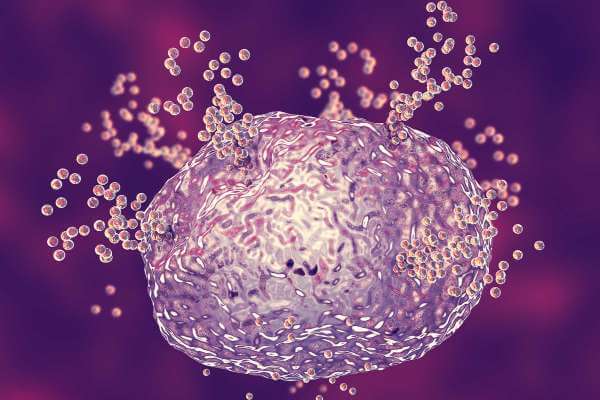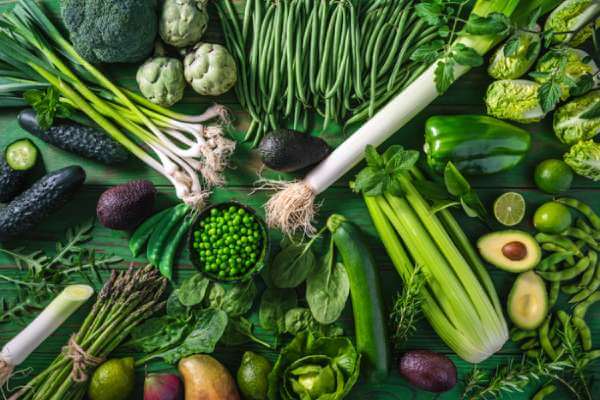The Endometriosis Diet: Foods to Eat and Foods to Avoid
By Dr. Jessica Drummond
DCN, CNS, PT, NBC-HWC
Author of Outsmart Endometriosis
As a nutritionist with a specialty in endometriosis and chronic pelvic pain, one of the most common questions I am asked is, “What is the best endometriosis diet?”
That’s a great question, but the answer is not so simple.
It depends.
The best diet for someone with endometriosis is a diet that supports their immune, digestive, and neurologic systems, plus takes into account any issues with inflammation, yeast overgrowth, mast cell activation or histamine intolerance, or other gut microbiome challenges.
Food can be powerful medicine for people with endometriosis when the nutrition plan is personalized based on data from functional lab testing.
How does nutrition impact endometriosis symptoms?
Endometriosis is an inflammatory and autoimmune disease that is influenced by hormonal factors. For some people high levels of estrogen or progesterone (even temporarily, such as during various times of the menstrual cycle) can also make symptoms worse.
Foods to lower inflammation associated with endometriosis
Inflammation in the brain, or anywhere where endometriosis lesions are found (including the pelvic region, reproductive organs, lungs, diaphragm, and more), can lead to mood changes, pain, sleep issues, fatigue, menstrual and fertility issues. Fortunately food can powerfully lower inflammation.
 Foods high in anti-inflammatory omega-3 fats
Foods high in anti-inflammatory omega-3 fats
- Fish
- Walnuts
- Fish oil supplements (must be of high quality)1
- Seaweed
- Chia seeds
Foods high in anti-inflammatory polyphenols2
- Foods high in flavanols (cocoa, tea, apples, broad beans)
- Foods high in flavanones (hesperidin in citrus fruit)
- Foods high in hydroxycinnamates (coffee, many fruits)
- Foods high in flavonols (quercetin in onions, apples and tea)
- Foods high in anthocyanins (berries)

Histamine and Endometriosis
Foods high in polyphenols, such as quercetin also reduce symptoms related to Mast Cell Activation Syndrome (MCAS) and histamine issues in endometriosis. Many people with endometriosis also struggle with skin issues and digestive symptom flares related to high histamine levels.
In addition to eating foods high in quercetin or taking pycnogenol supplements3 which stabilize mast cells, taking diamine oxidase (DAO) digestive enzymes, can also help to modulate histamine levels in people with endometriosis. Reducing high histamine foods, especially processed meats and alcoholic beverages, can also reduce endometriosis symptoms.
Endometriosis and The Gut Microbiome
Urinary organic acids testing and stool testing are great tools to help to further personalize the nutrition plan for individuals with endometriosis.
For example, for some people with elevated yeast overgrowth, eliminating sugar from the diet and adding apple cider vinegar4 can reduce yeast overgrowth.
For people with high overgrowth of opportunistic bacteria species on functional testing, adding antimicrobial foods such as garlic5, or coconut oil6 can improve the composition of the gut microbiome. Plus, adding foods high in beneficial species such as sauerkraut, kim chee, and yogurts can help to restore a healthy gut microbiome composition. Adding fibers that feed these newly added beneficial bacteria, supports their ability to thrive and reduce both inflammatory and digestive symptoms. Foods rich in prebiotic fiber include leeks, asparagus, onions, garlic, oats, bananas, berries, artichoke, konjac and other tubers.7,8
Foods to support hormone health for people with endometriosis
For some people with endometriosis, difficulty with processing estrogen and progesterone can exacerbate pelvic or period pain, dyspareunia, migraines, fatigue, and skin issues. Excessive production of estrogen or progesterone, or difficulty metabolizing these hormones can lead to an increase in symptoms.
To reduce these symptoms, support liver metabolism and optimize bowel function.
 Foods to support liver function (and hormone metabolism)9:
Foods to support liver function (and hormone metabolism)9:
- Cruciferous vegetables
- Amaranth
- Asparagus
- Buckwheat
- Celery
- Dandelion and purslane
- Kiwi and tangerine
- Onion
- Olive
- Papaya and mango
- Summer squash and yam
Foods to reduce constipation and diarrhea10:
- Increase mineral water intake to 1-2 liters per day
- Dried plums and figs
- Kiwi
- Pineapple and papaya
- Yogurt (containing Lactobacillus casei)11
- Probiotic foods and supplements containing Lactobacillus, Bifidobacterium and Saccharomyces12
Nutrition to support mitochondrial health
In addition to assessing nutrient sufficiency, composition of the gut microbiome and systemic yeast overgrowth, functional testing can give us insight into the mitochondrial strain present in people with endometriosis.
Many people with endometriosis are fatigued, struggle with insomnia, and struggle with brain fog and lack of cognitive focus due to mitochondrial dysfunction. Foods that support optimal mitochondrial function are great options for improving energy capacity for people with endometriosis.
Foods that support mitochondrial function and energy production are high in the following nutrients: B vitamins, magnesium, carnitine, coenzyme Q10, melatonin, and lipoic acid.
- Fish
- Leafy greens
- Liver and other organ meats
- Meat
- Eggs
- Legumes
- Whole grains
- Nuts and seeds, especially pistachios
- Mushrooms
- Tart cherries
Interested in learning more about functional nutrition strategies to help manage endo?
Register for the upcoming Outsmart Endometriosis free virtual workshop here.
Dr. Jessica Drummond is the founder and CEO of the Integrative Women’s Health Institute and the author of Outsmart Endometriosis. Jessica holds a license in physical therapy as well as clinical nutrition and is a board-certified health coach. She has over 23 years of experience working with clients to help them overcome pelvic pain. She also runs educational programs for women’s health professionals in more than 60 countries and leads virtual wellness and health-coaching programs for people struggling with endometriosis.
References
- Helbig, M., Vesper, A. S., Beyer, I., & Fehm, T. (2021). Does Nutrition Affect Endometriosis?. Geburtshilfe und Frauenheilkunde, 81(2), 191–199. https://doi.org/10.1055/a-1207-0557
- Williamson G. (2017). The role of polyphenols in modern nutrition. Nutrition bulletin, 42(3), 226–235. https://doi.org/10.1111/nbu.12278
- Kohama, T., Herai, K., & Inoue, M. (2007). Effect of French maritime pine bark extract on endometriosis as compared with leuprorelin acetate. The Journal of reproductive medicine, 52(8), 703–708.Mota, A. C., de Castro, R. D., de Araújo Oliveira, J., & de Oliveira Lima, E. (2015).
- Antifungal Activity of Apple Cider Vinegar on Candida Species Involved in Denture Stomatitis. Journal of prosthodontics : official journal of the American College of Prosthodontists, 24(4), 296–302. https://doi.org/10.1111/jopr.12207
- Bayan, L., Koulivand, P. H., & Gorji, A. (2014). Garlic: a review of potential therapeutic effects. Avicenna journal of phytomedicine, 4(1), 1–14.
- Joshi, S., Kaushik, V., Gode, V., & Mhaskar, S. (2020). Coconut Oil and Immunity: What do we really know about it so far?. The Journal of the Association of Physicians of India, 68(7), 67–72.
- Carlson, J. L., Erickson, J. M., Lloyd, B. B., & Slavin, J. L. (2018). Health Effects and Sources of Prebiotic Dietary Fiber. Current developments in nutrition, 2(3), nzy005. https://doi.org/10.1093/cdn/nzy005
- Kaur, A. P., Bhardwaj, S., Dhanjal, D. S., Nepovimova, E., Cruz-Martins, N., Kuča, K., Chopra, C., Singh, R., Kumar, H., Șen, F., Kumar, V., Verma, R., & Kumar, D. (2021). Plant Prebiotics and Their Role in the Amelioration of Diseases. Biomolecules, 11(3), 440. https://doi.org/10.3390/biom11030440
- Guan, Y. S., & He, Q. (2015). Plants Consumption and Liver Health. Evidence-based complementary and alternative medicine : eCAM, 2015, 824185. https://doi.org/10.1155/2015/824185
- Bellini, M., Tonarelli, S., Barracca, F., Rettura, F., Pancetti, A., Ceccarelli, L., Ricchiuti, A., Costa, F., de Bortoli, N., Marchi, S., & Rossi, A. (2021). Chronic Constipation: Is a Nutritional Approach Reasonable?. Nutrients, 13(10), 3386. https://doi.org/10.3390/nu13103386
- Pereg, D., Kimhi, O., Tirosh, A., Orr, N., Kayouf, R., & Lishner, M. (2005). The effect of fermented yogurt on the prevention of diarrhea in a healthy adult population. American journal of infection control, 33(2), 122–125. https://doi.org/10.1016/j.ajic.2004.11.001
- Yan, F., & Polk, D. B. (2006). Probiotics as functional food in the treatment of diarrhea. Current opinion in clinical nutrition and metabolic care, 9(6), 717–721. https://doi.org/10.1097/01.mco.0000247477.02650.51
- Fila, M., Chojnacki, C., Chojnacki, J., & Blasiak, J. (2021). Nutrients to Improve Mitochondrial Function to Reduce Brain Energy Deficit and Oxidative Stress in Migraine. Nutrients, 13(12), 4433. https://doi.org/10.3390/nu13124433

